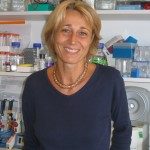Link to Pubmed [PMID] – 2463308
J Immunol 1989 Jan; 142(2): 452-62
CTL specific for the HIV belong to the CD8 subset of T lymphocytes, and their activity is restricted by class I HLA transplantation Ag. In this report, HIV-specific CTL and their precursor cells were quantified by limiting dilution analysis. CTL were recovered from the lungs, lymph nodes, and blood of asymptomatic seropositive carriers and of patients with AIDS. HIV was found to be very immunogenic. High frequencies of both HIV-specific CTL and CTL precursor cells were detected in infected individuals. These CTL killed autologous HIV-infected macrophages and T4 lymphoblasts. They also killed doubly transfected P815-A2-env-LAV mouse tumor cells, which express the human HLA-A2 gene and the HIV-1 env gene. In the longitudinal studies of two HIV-infected patients, CTL and CTL precursor cell frequencies decreased as the clinical and immunologic status of the patients deteriorated. Most surprisingly, PBL from seronegative donors also responded to HIV stimulation in vitro and generated large numbers of HLA-restricted, HIV-specific CTL.
